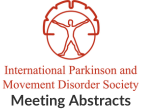Determinants of health-related quality of life in children and young adults with dystonia
Objective: To systematically investigate to what extent motor and non-motor symptoms were related to health-related quality of life (HR-QoL) in children and young adults with…Phenotype of PLP1-related disorder caused by novel mutation: a case report
Objective: To illustrate phenotype of PLP1-related disorder caused by a novel mutation. Background: Phenotypes of X-linked PLP1-related disorders vary from severe forms of hypomyelinating leukodystrophy-Pelizaeus–Merzbacher…Self-assessed psychological symptoms, fatigue and depersonalization in dystonia
Objective: To assess depressive, anxiety, fatigue and dissociative symptoms in patients with dystonia. Background: The basal ganglia, once considered exclusively concerned with motor control, are…Sensory trick phenomenon in cervical dystonia: a functional MRI study
Objective: This study investigates the patterns of brain functional MRI (fMRI) during resting-state (RS) with and without sensory trick (ST) and during the ST imagination…Pattern and Predictors Of Tremor In Patients With Primary Dystonia
Objective: To assess the frequency, location and predictors of tremor in Indian patients with primary dystonia. Background: Tremor is now recognized to be a frequent…Voice Cepstral Analysis in Adductor-Type Spasmodic Dysphonia
Objective: To investigate differences in voice parameters between patients affected by adductor-type spasmodic dysphonia (ASD) and Healthy subjects (HS). Background: Adductor-type spasmodic dysphonia (ASD) is…Trisomy 8 Mosaicism and dystonia: a THAP1 overdose?
Objective: We report a case of Trisomy 8 Mosaicism (T8M, Warkany Syndrome) with craniocervical and hand dystonia, an hitherto unreported disease association. Background: T8M is…Diplopia: An Interesting Complication of Dropped Head Syndrome
Objective: To describe an interesting case of new-onset diplopia due to loss of compensation for trochlear nerve palsy as a result of dropped head in…Dystonia Gravidarum Improved After Joint Position Error Training
Objective: Describe a case of new dystonia gravidarum improving with joint position error training Background: KB is a previously healthy 34-year-old primiparous female without previous…Comparative Age-Relatedness of Dyskinesia, Dystonia and Ataxia Rating Scales in Healthy Children
Objective: In healthy children (4-16 years of age), we aimed to associate DIS scores with age, and compare age-related influences on dyskinesia (DIS), dystonia (BFMDRS)…
- « Previous Page
- 1
- …
- 38
- 39
- 40
- 41
- 42
- …
- 48
- Next Page »
